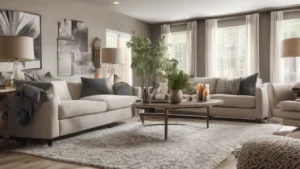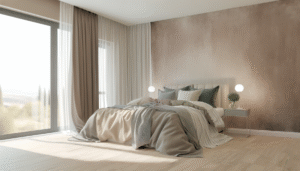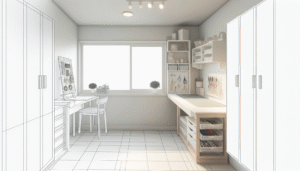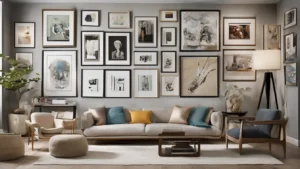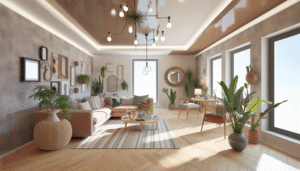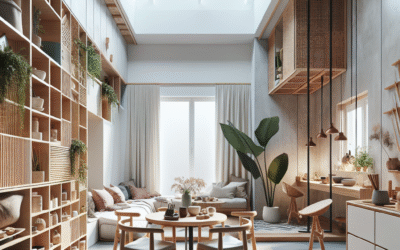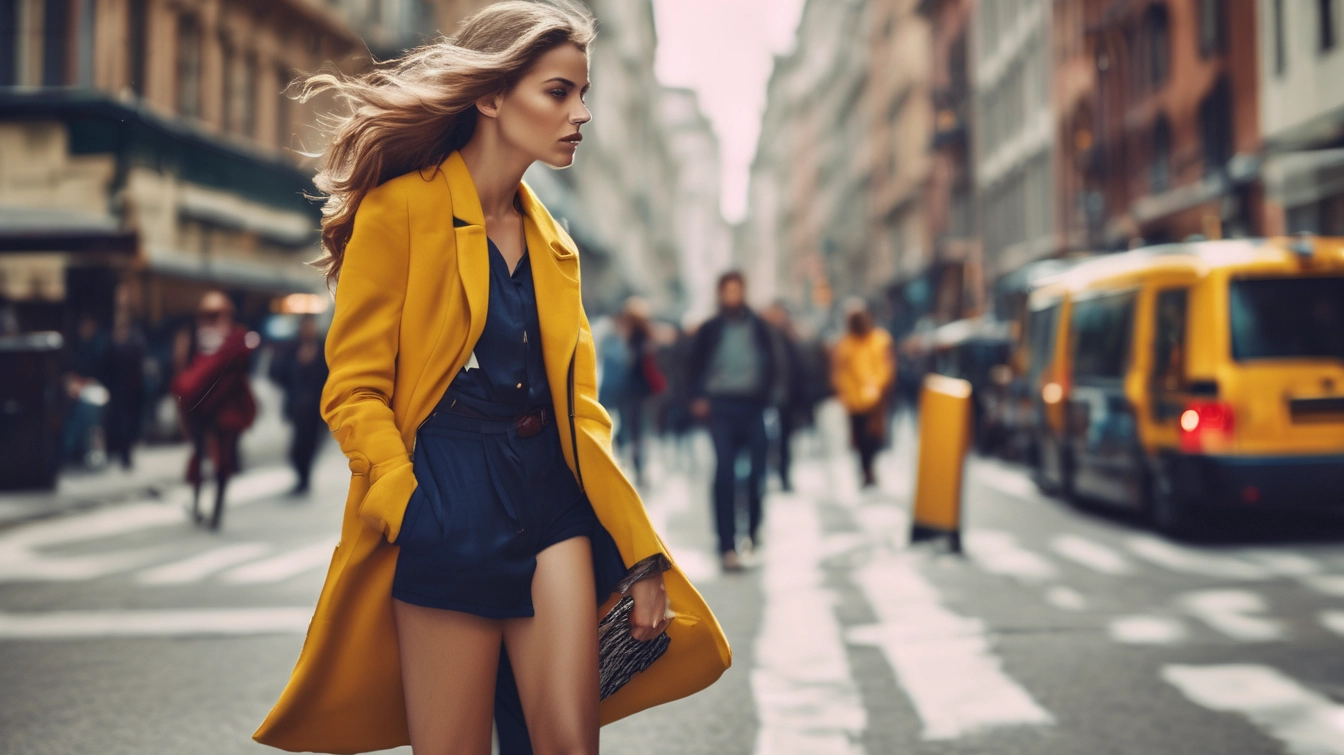
The fashion world moves fast—too fast for most of us to keep up. One day everyone’s wearing oversized blazers, the next it’s all about fitted silhouettes. You scroll through Instagram, see perfectly curated outfits, and wonder how some people make style look so… effortless.
Here’s the truth: effortless style isn’t actually effortless. It’s the result of understanding fundamental fashion principles, knowing which trends to embrace (and which to skip), and building a wardrobe that works with your lifestyle, not against it.
This comprehensive guide will teach you how to develop your own signature style that feels authentic, looks current, and doesn’t require a fashion degree to maintain. You’ll learn to navigate trends strategically, build a versatile wardrobe foundation, and create outfits that make you feel confident without overthinking every decision.
Whether you’re starting from scratch or looking to refine your existing style, these proven strategies will help you develop a fashion sense that’s uniquely yours—one that evolves with trends while staying true to your personal aesthetic.
Understanding the Psychology Behind Effortless Style
What Makes Style Look Effortless?
The paradox of effortless style lies in its calculated spontaneity. When you see someone who appears to have thrown on the perfect outfit without trying, you’re actually witnessing the result of careful planning, quality pieces, and an understanding of what works for their body, lifestyle, and personal brand.
Effortless style operates on three core principles:
Consistency in Color Palette: People with seemingly natural style sense typically stick to a cohesive color story. They might vary between neutrals with strategic pops of color, or maintain a more dramatic palette, but there’s always an underlying harmony that makes every piece feel intentional.
Quality Over Quantity: The appearance of ease often comes from better fabrics that drape well, hold their shape, and move naturally with the body. A well-made cotton t-shirt will always look more polished than five cheap alternatives, even if the price point is similar.
Fit Mastery: Understanding your body’s proportions and dressing to enhance your natural silhouette creates the illusion that clothes were made specifically for you. This doesn’t mean everything has to be tailored, but it does mean knowing when something needs adjustment.
The Trend Relationship Framework
Smart style enthusiasts don’t chase every trend—they develop a framework for evaluating which trends align with their personal aesthetic and lifestyle needs. This selective approach prevents the "trying too hard" appearance that comes from adopting every new fashion moment.
Consider trends in three categories:
Investment Trends: These are substantial shifts that indicate longer-term direction changes in fashion. Think the move toward sustainable materials, the return of vintage-inspired silhouettes, or the integration of athletic wear into everyday fashion. These trends warrant more significant wardrobe investments because they have staying power.
Experiment Trends: Seasonal color stories, specific prints, or styling techniques that can be incorporated through accessories or affordable pieces. These allow you to stay current without major financial commitment or wardrobe overhauls.
Pass Trends: Highly specific, often extreme fashion moments that require significant investment but have limited versatility. Unless you’re in a creative field where fashion risk-taking is expected and appreciated, these trends are usually worth observing rather than adopting.
Building Your Style Foundation: The Essential Framework
Developing Your Personal Style Architecture
Before you can make any trend work for you, you need to understand your personal style architecture—the underlying structure that makes your fashion choices feel cohesive and intentional.
Lifestyle Audit: Your daily activities should drive 80% of your wardrobe decisions. If you work in a corporate environment, commute by public transportation, and enjoy weekend hiking, your wardrobe needs will differ significantly from someone who works from home, drives everywhere, and prefers cultural activities.
Start by tracking your activities for a typical week. Note what you actually wear, what you wish you had worn, and moments when you felt overdressed or underdressed. This real-world data is more valuable than any style quiz or celebrity inspiration board.
Body Relationship Assessment: This goes beyond traditional "body type" categorization. Consider your comfort zones, which silhouettes make you feel confident, and what aspects of your appearance you most enjoy highlighting. The goal isn’t to hide or minimize anything, but to understand what makes you feel authentically yourself.
Color Psychology and Personal Palette: Colors affect both how others perceive you and how you feel about yourself. Your personal palette should include colors that complement your skin tone, align with your professional needs, and reflect your personality. Most successful personal styles revolve around 3-5 core colors with 2-3 accent colors for variety.
The 70-20-10 Wardrobe Formula
Professional stylists often use the 70-20-10 formula to create balanced, functional wardrobes that accommodate both stability and creativity:
70% Core Pieces: These are your wardrobe workhorses—well-fitting jeans, classic blazers, quality basic tops, versatile dresses, and comfortable shoes that work across multiple scenarios. These pieces should be in your core color palette and represent the majority of your clothing budget.
20% Seasonal Updates: This category includes trend-influenced pieces that refresh your wardrobe without requiring complete overhauls. Think current season colors, updated versions of classic silhouettes, or accessories that reflect contemporary styling.
10% Statement Pieces: These are the conversation starters—unique accessories, bold patterns, or distinctive silhouettes that express your personality and creativity. Because they represent such a small percentage of your wardrobe, you can afford to take more risks in this category.
This formula ensures you always have appropriate options while maintaining the flexibility to express creativity and stay current with fashion movements.
Trend Forecasting and Strategic Style Planning
Understanding Fashion Cycle Timing
Successful trend adoption requires understanding fashion industry timing. What you see on runways today won’t hit mainstream retail for 6-12 months, and by the time something becomes widely available, industry insiders are already moving toward the next evolution.
Pre-Trend Indicators: Fashion-forward individuals often source inspiration from street style in fashion capitals, emerging designers, vintage revivals, and cultural movements. Following fashion weeks not for literal translation, but for directional inspiration can help you identify trends before they become mainstream.
Peak Adoption Strategy: When a trend reaches peak visibility—appearing in major retailers, lifestyle magazines, and social media feeds simultaneously—it’s often the optimal time for most people to experiment. The selection is broad, price points are varied, and styling examples are abundant.
Post-Peak Opportunities: As trends begin to fade from mainstream attention, they often become more wearable for everyday life. The extreme elements get refined, prices drop, and you can incorporate elements without looking like you’re following a trend checklist.
Seasonal Trend Integration Techniques
Rather than adopting trends wholesale, strategic integration allows you to stay current while maintaining your personal style integrity.
Color Story Updates: The easiest way to embrace trends is through seasonal color adoption. If coral is trending, you might incorporate it through accessories, makeup, or a single statement piece rather than rebuilding your entire palette.
Silhouette Evolution: When new silhouettes emerge, consider how they might work within your existing wardrobe. If wide-leg pants are trending but you prefer fitted styles, you might try a slightly wider leg than usual rather than jumping to extreme proportions.
Styling Technique Adoption: Often, what makes something look current isn’t the piece itself but how it’s styled. Layering techniques, proportion mixing, or unexpected combinations can make classic pieces feel fresh and contemporary.
Creating Your Personal Trend Filter
Develop criteria for evaluating trends based on your lifestyle, budget, and style goals:
Versatility Assessment: Ask yourself how many different ways you could style a trend-driven piece. If the answer is fewer than three distinct looks, it might not warrant investment unless it serves a specific purpose.
Longevity Prediction: Consider whether the trend enhances your existing wardrobe or requires supporting purchases. Trends that work with your current pieces are more likely to feel authentic and less likely to become expensive mistakes.
Authenticity Check: The most important filter is whether adopting a trend feels like a natural extension of your personal style or a departure from it. The best trend adoption feels like evolution, not transformation.
Mastering Color, Pattern, and Texture Coordination
Advanced Color Theory Application
Understanding color relationships beyond basic coordination elevates your style from "matched" to sophisticated. Professional stylists use several advanced color techniques that create visual interest while maintaining harmony.
Tonal Dressing: Working within the same color family but varying saturation and brightness creates sophisticated monochromatic looks. For example, combining navy, powder blue, and denim creates depth without the complexity of multiple colors.
Analogous Harmony: Using colors that sit next to each other on the color wheel (like blue, blue-green, and green) creates pleasing combinations that feel natural and calming. This technique works particularly well for professional environments.
Complementary Accents: Small doses of complementary colors (opposites on the color wheel) can energize neutral outfits without overwhelming them. A rust-colored scarf with a navy outfit, or emerald accessories with a gray ensemble.
Seasonal Color Adaptation: Your personal color palette should have seasonal variations. Summer might call for lighter, brighter versions of your core colors, while winter might emphasize deeper, richer tones. This keeps your style feeling fresh year-round.
Pattern Mixing Mastery
Pattern mixing often intimidates people, but following established principles makes it approachable and sophisticated.
Scale Variation: Combine patterns of different scales—a large floral with a small polka dot, or a wide stripe with a narrow check. This prevents patterns from competing for attention.
Color Bridge Technique: Use a common color to connect different patterns. If your top has navy and white stripes, you might add a floral scarf that includes navy, creating visual continuity.
Texture as Pattern: Don’t forget that texture creates visual interest similar to pattern. A chunky knit sweater paired with a smooth silk skirt creates contrast without requiring multiple prints.
Pattern Proportion Rules: Generally, limit bold patterns to one major piece per outfit, using smaller doses of complementary patterns in accessories or less prominent pieces.
Texture and Fabric Consciousness
The quality and type of fabrics you choose dramatically impact how polished your outfits appear. Understanding fabric behavior helps you make better purchasing decisions and create more interesting looks.
Seasonal Fabric Transitions: Natural fibers like linen and cotton for warm weather, wool and cashmere for cold weather aren’t just about comfort—they also signal seasonal appropriateness and sophistication.
Mixing Fabric Weights: Combining different fabric weights creates visual interest and prevents outfits from looking flat. A structured blazer over a flowing silk top, or a chunky knit with sleek leather pants.
Care and Longevity Considerations: Fabrics that maintain their appearance with regular wear and washing will always look more polished than those that quickly show signs of wear. Sometimes spending more on better fabrics is more economical long-term.
Wardrobe Curation and Strategic Shopping
The Capsule Wardrobe Evolution
Traditional capsule wardrobes aimed for extreme minimalism, but modern interpretations focus on strategic curation—having enough variety to feel creative while maintaining coherence and quality.
Seasonal Capsule Development: Rather than one year-round capsule, develop seasonal cores that reflect weather needs and color preferences. Spring might emphasize lighter layers and fresh colors, while fall focuses on rich textures and deeper tones.
Category Quotas: Instead of arbitrary number limits, establish category quotas based on your lifestyle. If you rarely attend formal events, limit formal wear to 1-2 versatile pieces. If you work out daily, invest in quality athletic wear even if it takes up proportionally more closet space.
Replacement Strategy: Develop criteria for when to replace items—not just when they wear out, but when they no longer serve your evolving style or lifestyle needs. This prevents closet stagnation and ensures your wardrobe grows with you.
Strategic Shopping Techniques
Successful wardrobe building requires strategic thinking rather than impulse purchasing, even when deals seem attractive.
The 24-48 Hour Rule: Before purchasing anything beyond basic replacements, wait at least 24 hours (48 for significant investments). This cooling-off period helps distinguish between genuine needs and momentary desires.
Cost-Per-Wear Analysis: Calculate potential cost-per-wear for purchases, especially investment pieces. A $200 coat worn twice per week for five months costs less per wear than a $50 coat worn five times total.
Wardrobe Gap Assessment: Before shopping, identify specific gaps in your wardrobe. "I need something nice for work presentations" is more useful than "I need more work clothes" because it guides you toward specific solutions.
Multi-Season Versatility: Prioritize pieces that work across seasons with layering adjustments. A silk blouse works alone in summer, under sweaters in winter, and with light jackets in transitional seasons.
Investment vs. Trend Spending Strategy
Allocating your fashion budget strategically ensures you get maximum value and style impact from your purchases.
Investment Categories: Coats, suits, quality denim, leather goods, and shoes typically warrant higher investment because they’re worn frequently, highly visible, and expected to last multiple years.
Trend Categories: Seasonal colors, trendy silhouettes, and statement accessories can often be purchased at lower price points because they’re expected to be temporary additions to your wardrobe.
Quality Indicators: Learn to recognize quality construction—finished seams, quality hardware, natural fiber content, and proper fit through shoulders and waist. These details impact both appearance and longevity.
Timing Purchases: Shop end-of-season sales for classic pieces, but buy trendy items early in the season when selection is best. Holiday and back-to-school periods often offer the best deals on wardrobe basics.
Styling Techniques and Outfit Architecture
The Art of Proportional Dressing
Understanding and manipulating proportions is perhaps the most powerful tool in creating sophisticated, intentional-looking outfits.
The Rule of Thirds: Divide your silhouette into thirds and vary where the divisions fall. If you’re wearing a long top, balance it with fitted bottoms. If you choose wide-leg pants, balance with a more fitted top. This creates visual interest and prevents overwhelming your frame.
High-Low Mixing: Combining expensive-looking pieces with more casual elements creates approachable sophistication. A structured blazer with distressed jeans, or a silk blouse with comfortable sneakers. This technique makes formal pieces more wearable and elevates casual pieces.
Layering Architecture: Successful layering follows logical order—lighter fabrics under heavier ones, shorter pieces over longer ones, and fitted layers under loose ones. Each layer should be intentional and visible, not hidden.
Focal Point Strategy: Every outfit should have one primary focal point—whether it’s a statement necklace, bold shoes, or interesting texture. Additional elements should support rather than compete with this focal point.
Advanced Accessory Integration
Accessories can transform basic outfits, but strategic use is key to avoiding an overdone appearance.
The 5-Accessory Rule: Most polished looks incorporate approximately five accessories—which might include shoes, bag, watch, belt, and one piece of jewelry. More than this risks looking cluttered, fewer might appear unfinished.
Metallic Consistency: While mixing metals can work, it requires intention. Generally, stick to one metal family per outfit (gold, silver, or rose gold) unless you’re specifically creating contrast for artistic effect.
Scale Coordination: Large accessories work best with simple outfits, while detailed clothing requires more subtle accessories. A statement necklace pairs well with a simple dress, but would compete with an already embellished top.
Functional Beauty: The best accessories serve both aesthetic and practical purposes. A beautiful watch that keeps accurate time, a stunning bag that holds your essentials comfortably, shoes that look great and feel comfortable for your daily activities.
Seasonal Styling Adaptations
Adapting your core style across seasons prevents the need for complete wardrobe overhauls while keeping your look current and weather-appropriate.
Transitional Layering: Master the art of adding and removing layers as weather changes. Cardigans, light scarves, and versatile jackets allow you to adapt outfits throughout the day and across seasons.
Color Temperature Adjustments: Shift toward warmer, richer tones in fall and winter, cooler, lighter tones in spring and summer. This doesn’t require completely new wardrobes—often it’s about emphasizing different pieces you already own.
Fabric Weight Transitions: Gradually transition between fabric weights rather than making abrupt seasonal changes. In early fall, you might wear a lightweight wool sweater instead of cotton, preparing for heavier knits as temperature drops.
Shoe Strategy: Your shoe collection should include options for different weather conditions while maintaining style consistency. Waterproof options don’t have to sacrifice style, and summer shoes should be comfortable enough for increased walking.
Digital Age Style and Social Media Strategy
Curating Your Digital Style Presence
In our connected world, your style extends beyond in-person interactions to digital representation across social platforms.
Photography Considerations: Understanding how your outfits translate to photos helps you make better choices for events you know will be documented. Some patterns and colors photograph better than others, and fit issues that might be minor in person become magnified in photos.
Platform-Specific Styling: Different social platforms have different style cultures. LinkedIn outfits should emphasize professionalism and competence, while Instagram might allow for more creativity and trend experimentation.
Consistent Personal Brand: Your style should tell a coherent story across platforms and in-person interactions. This doesn’t mean wearing identical outfits, but maintaining recognizable elements that make your style distinctly yours.
Digital Decluttering: Just as you curate your physical wardrobe, curate your digital style inspiration. Unfollow accounts that make you feel inadequate or pressure you toward purchases that don’t align with your goals.
Virtual Styling and Remote Work Adaptations
The rise of remote work and video calls has created new styling considerations that didn’t exist in traditional professional environments.
Camera-Friendly Choices: Solid colors and simple patterns typically work better on video calls than busy prints or very light colors that can wash out. Consider how your outfits appear from chest up, since that’s what colleagues see most often.
Comfort-Professional Balance: Working from home allows for more comfortable choices, but maintaining some professional elements can impact your productivity and confidence. This might mean wearing jeans with a nice top, or comfortable shoes that still look polished.
Transition Pieces: Having pieces that can quickly elevate your look for unexpected video calls or in-person meetings helps you feel prepared. A blazer that can go over pajama tops, or statement earrings that instantly make you look more put-together.
Investment in Tops: When most of your professional interactions happen via video, investing in quality tops becomes more important than investing in pants or shoes. Focus your budget accordingly.
Sustainable Fashion and Ethical Style Choices
Building a Sustainable Style Practice
Sustainable fashion doesn’t require sacrificing style—it requires more thoughtful consumption and care practices.
Quality Over Quantity Philosophy: Buying fewer, better pieces is both more sustainable and often more economical long-term. One well-made shirt that lasts five years is more cost-effective and environmentally friendly than five cheap shirts that last one year each.
Care and Maintenance Mastery: Proper garment care extends clothing life significantly. Learning to properly wash, store, and make minor repairs keeps clothes looking new longer and delays replacement needs.
Versatility Prioritization: Choose pieces that serve multiple purposes and work in various contexts. A dress that works for work, weekend activities, and evening events provides more value than three separate pieces for each occasion.
Secondhand Shopping Strategy: Thrift stores, consignment shops, and online resale platforms offer opportunities to find unique pieces and designer items at fraction of retail cost. Develop an eye for quality pieces that need minor alterations or repairs.
Ethical Brand Research and Support
Making ethical fashion choices requires research, but it becomes easier as you develop familiarity with responsible brands and practices.
Transparency Indicators: Ethical brands typically provide information about their manufacturing processes, labor practices, and material sourcing. Lack of transparency often indicates practices the company prefers not to disclose.
Local and Small Business Support: Supporting local designers and small businesses often means supporting more ethical practices by default, as smaller operations typically have more control over their supply chains.
Cost-Per-Impact Analysis: Sometimes paying more for ethically-made pieces is worth it not just for quality, but for supporting practices you believe in. Consider the true cost of cheap fashion on workers and environment.
Gradual Transition Strategy: You don’t need to replace your entire wardrobe immediately. As pieces wear out or no longer serve you, replace them with more sustainable options. This gradual approach is more financially manageable and practically sustainable.
Personal Style Evolution and Long-Term Planning
Adapting Style Through Life Changes
Your style should evolve with your life circumstances, career changes, and personal growth while maintaining core elements that feel authentically you.
Career Transition Styling: Job changes often require wardrobe adjustments. Research the culture of your new workplace, but don’t abandon your personal style entirely. Find ways to express yourself within professional requirements.
Life Stage Adaptations: Different life stages bring different needs—new parent, empty nester, retiree. Your wardrobe should adapt to these changes while honoring your style preferences and practical needs.
Body Change Accommodation: Bodies change throughout life, and your style should adapt accordingly. This means being willing to alter or replace pieces that no longer fit properly, rather than holding onto them for emotional reasons.
Confidence Evolution: As your confidence grows, you might become more willing to experiment with bold choices, or conversely, you might develop more refined, subtle preferences. Allow your style to reflect your growing self-knowledge.
Creating Your Style Legacy
Think about the impression you want to leave and how your style choices contribute to that legacy.
Signature Element Development: Many stylish people are known for particular elements—a specific color, type of accessory, or styling technique. Developing your own signature elements creates memorable style consistency.
Mentoring and Inspiration: As you develop your style confidence, consider how you might help others in their style journeys. This could be through formal mentoring, social media sharing, or simply being willing to answer questions from friends.
Documentation and Reflection: Keep track of your style evolution through photos and notes. This helps you understand what works consistently and what represents temporary experiments.
Continuous Learning: Style is a lifelong practice. Stay curious about new techniques, different cultures’ approaches to dress, and emerging designers. Your style should continue evolving throughout your life.
Frequently Asked Questions
How often should I update my wardrobe to stay current with trends?
Most style experts recommend updating 20-30% of your wardrobe annually, focusing on accessories and seasonal pieces rather than core items. This allows you to stay current without constantly overhauling your entire closet or overspending on trendy pieces that may quickly go out of style.
What’s the best way to determine which trends are worth investing in?
Use the “three-outfit test”—if you can immediately think of three different ways to wear a trendy piece with items you already own, it’s likely worth considering. Also evaluate whether the trend aligns with your lifestyle, body preferences, and existing color palette before making any significant investment.
How can I develop a signature style without looking boring or repetitive?
Focus on consistent elements like color palette, fit preferences, or styling techniques rather than wearing identical outfits. Your signature might be always wearing one bold accessory, consistently choosing interesting textures, or having a specific approach to proportions. Variation within consistency creates signature style.
Is it possible to look stylish on a very limited budget?
Absolutely. Focus on fit, care, and strategic shopping rather than expensive pieces. Thrift stores, end-of-season sales, and classic pieces from affordable retailers can create stylish wardrobes. The key is choosing quality basics and adding personality through accessories and styling techniques.
How do I know if a trend suits my body type and personal style?
Try trends in small doses first—through accessories or inexpensive pieces—before making major investments. Take photos to see how trends look on you, and pay attention to how you feel wearing them. If a trend makes you feel confident and authentic, it likely suits you regardless of conventional “rules.”
What should I do with clothes that no longer fit my style but are still in good condition?
Consider donating to charity, selling through consignment or online platforms, or organizing clothing swaps with friends. Some items might work for other family members. Properly parting with pieces that no longer serve you makes room for items that better reflect your current style preferences.
How can I build confidence to experiment with bolder style choices?
Start with small experiments in comfortable environments. Try bold accessories before bold clothing, or experiment with new styling techniques using familiar pieces. Build gradually—confidence comes from positive experiences, so start with changes that feel manageable rather than completely transformative.
Should I follow fashion rules or break them to develop personal style?
Understanding traditional fashion guidelines gives you a foundation, but personal style comes from knowing when and how to break rules intentionally. Learn the basics first, then experiment with breaking them in ways that feel authentic to you. The best style choices often involve creative rule-breaking.
Your Style Journey Starts Now
Developing effortless style isn’t about perfection—it’s about progress. Every small decision you make, from choosing quality basics to experimenting with new color combinations, builds toward a more confident, authentic version of yourself.
Remember that style is deeply personal. What works for influencers, celebrities, or even friends might not work for you, and that’s perfectly fine. Your goal should be developing a style that makes you feel confident, comfortable, and authentically yourself while staying appropriately current for your lifestyle and professional needs.
The key to truly effortless style is patience with the process. Allow yourself time to experiment, make mistakes, and refine your choices. Your style will continue evolving throughout your life, reflecting new experiences, changing priorities, and growing confidence.
Start with one small change—maybe organizing your closet by color, trying a new styling technique, or investing in one quality basic piece. These small steps compound over time, creating the foundation for the effortless, confident style you’re seeking.
Your unique perspective, lifestyle, and preferences are what will make your style truly special. Embrace the journey of discovering what makes you feel your best, and remember that the most stylish people are those who wear their clothes with confidence and authenticity.
Content Disclaimer
The information provided in this article is for educational and inspirational purposes only. Fashion and style advice should be adapted to individual preferences, body types, budgets, and lifestyle needs. Results may vary based on personal circumstances, and readers should make purchasing and styling decisions based on their own judgment and financial situation. Product recommendations and styling suggestions are general in nature and may not be suitable for every individual.
Categories
- Accent Walls & Ceilings (61)
- Art Curation & Gallery (62)
- Bedding Style Trends (68)
- Bedroom Makeover (81)
- Bohemian & Eclectic Styles (58)
- DIY & Budget-Friendly Decor (64)
- Eco-Friendly Design (62)
- Furniture Care (71)
- Home Decor & Design Ideas (162)
- Home Wellness Spaces (59)
- Integrated Outdoor Living (67)
- Japandi Style (61)
- Kids and Nursery Decor (59)
- Living Room Decor (79)
- Mix & Match Techniques (73)
- Modern & Contemporary Design (66)
- Rug Sizing & Placement (73)
- Scandinavian Design Inspiration (20)
- Seasonal Home Decor (79)
- Small Space Solutions (73)
- Wall Art & Painting Tips (77)
Recent Comments
Archives
Product Gallery
-
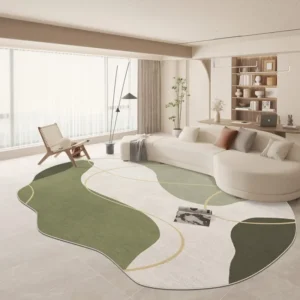 Large Area Green Rugs for Bedroom Nordic Living Room Decoration Shaped Carpet Irregular Plush Lounge Rug Home Thick Washable Mat
Rated 5.00 out of 5$54.94 – $346.41Price range: $54.94 through $346.41
Large Area Green Rugs for Bedroom Nordic Living Room Decoration Shaped Carpet Irregular Plush Lounge Rug Home Thick Washable Mat
Rated 5.00 out of 5$54.94 – $346.41Price range: $54.94 through $346.41 -
 Nordic Style Rugs for Bedroom Morandi Living Room Decoration Carpet Large Area Geometry Lounge Rug Home Cloakroom Non-slip Mat
Rated 5.00 out of 5$39.46 – $597.66Price range: $39.46 through $597.66
Nordic Style Rugs for Bedroom Morandi Living Room Decoration Carpet Large Area Geometry Lounge Rug Home Cloakroom Non-slip Mat
Rated 5.00 out of 5$39.46 – $597.66Price range: $39.46 through $597.66 -
 Irregular Shapes Living Room Decoration Carpet Modern Style Rugs for Bedroom Home Thicken Plush Rug Fluffy Soft Lounge Floor Mat
Rated 4.83 out of 5$55.84 – $347.37Price range: $55.84 through $347.37
Irregular Shapes Living Room Decoration Carpet Modern Style Rugs for Bedroom Home Thicken Plush Rug Fluffy Soft Lounge Floor Mat
Rated 4.83 out of 5$55.84 – $347.37Price range: $55.84 through $347.37

